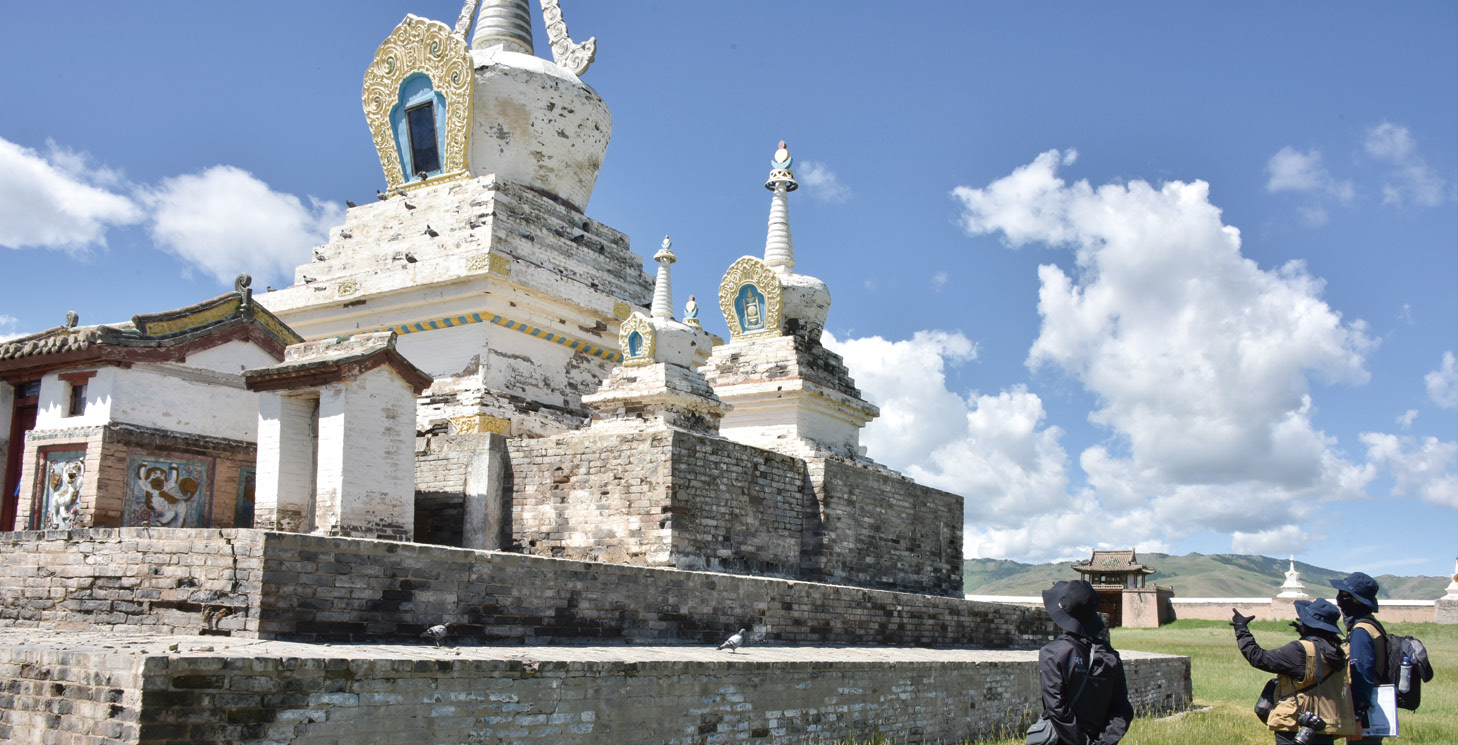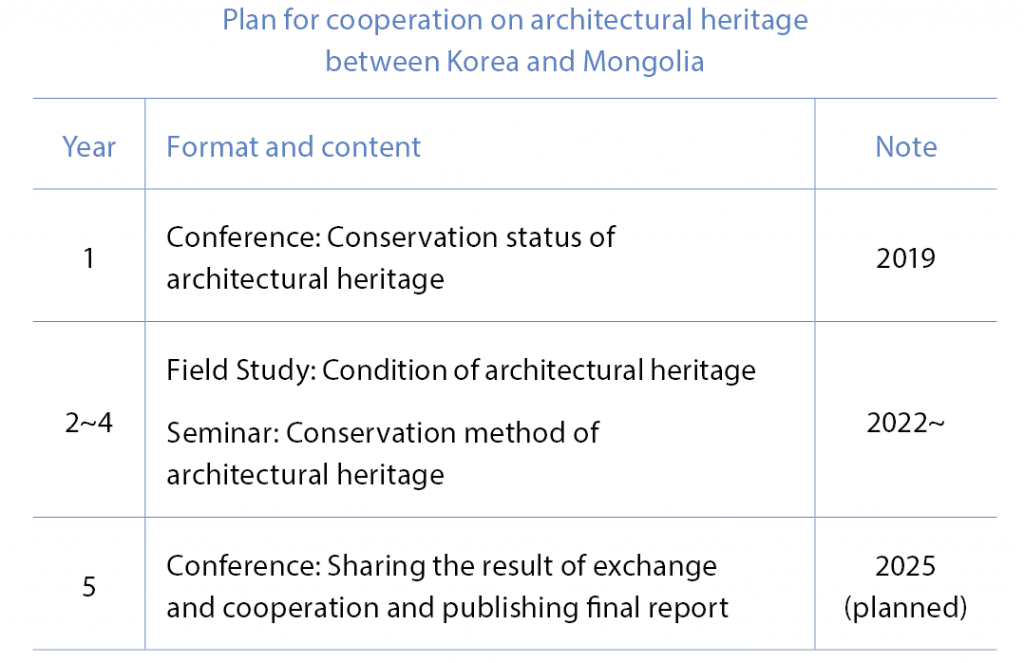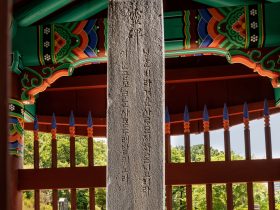Safety and Disaster Prevention Division
Park, Chanmin


The Safety and Disaster Prevention Division of the NRICH was established in 2017 and conducts researches on ‘safety control of architectural heritage,’ ‘the impact of the disaster on cultural heritage and damage reduction’ and ‘experiments on the structural performance of architectural heritage.’
Among these tasks, we use diverse measuring instruments to investigate the structural and material damage on architectural heritage thoroughly for research on ‘safety control of architectural heritage,’ and draw ways to determine the exact state and cause of damage and produce preventive conservation measures.
In 2017, the NRICH signed an agreement on protecting cultural heritage and fostering related human resources with the National Cultural Heritage Center of Mongolia to cooperate in promoting the preservation of the cultural heritages of both countries through cultural heritage conservation and academic, human resources and technological exchanges.
The NRICH’s Safety and Disaster Prevention Division and Mongolia’s emergency cultural heritage protection division made a ‘Working-level on Exchange and Cooperation for Disaster Prevention of Architectural Heritage’ (2019-2023) on June 16, 2018. The agreement on joint research and technology exchange for the safety and disaster prevention of architectural cultural heritage is based on the shared ideas on the importance of preventive safety management and the need for technological exchange. Through this exchange and cooperation, it is expected that Mongolia will advance the conservation technology of Mongolian architectural heritage by incorporating Korea’s systematic and scientific safety management technology for architectural heritage while the Korean side would be able to acquire data on the status and causes of various damage to the architectural cultural heritage of Mongolia which has already been significantly damaged due to various factors.


Korea-Mongolia Joint Conference on Disaster Prevention for Architectural Heritage in 2019
During the first exchange in 2019, a conference was held under the topic of the policies and technologies for preservation and damage cases of architectural heritage in both countries. The conference was held at the National Cultural Heritage Center of Mongolia and Mongolia’s Ministry of Education, Culture, Science and Sports, the National Cultural Heritage Center, National Emergency Management Agency, National Agency for Meteorology and Environmental Monitoring as well as regional disaster management authorities and major museums participated in the conference along with the Safety and Disaster Prevention Division from Korea’s NRICH. At this event, seven presentations (four from Mongolia and three from Korea) were made on the safety management system and technology for the preservation of cultural heritage, the status of preservation of architectural heritage, and disaster prevention and damage cases for cultural heritage.
Through presentations, it was identified that major damaging factors for architectural heritage in both Korea and Mongolia are precipitation and ultraviolet rays in summer, snowfall and freezing injury in winter. Especially, the presentations showed the relationship between the climatic condition of Mongolia, which is harsher than that of Korea, and the damages caused to architectural heritage. The conference also provided an opportunity to understand the current status of preservation and management of architectural heritage in both countries and to give shape to future exchanges and cooperation.
The First Survey on Preservation Status of Major Architectural Heritages in Mongolia
The cooperation for the second to fourth year consists of a field study on major architectural heritages in Mongolia and a seminar on conservation methods. The field study investigates architectural types of major architectural heritages of Mongolia and discusses its status and cause of damage as well as a reasonable conservation plan. The seminar is to share architectural characteristics, conservation policies and technologies, and damage cases of architectural heritages in Korea and Mongolia. The exchanges were temporarily suspended due to the global spread of COVID-19 in 2020 and 2021 and resumed in 2022.




The second exchange was held for nine days from 2022, July 25, Monday through August 2, Tuesday, including a field study of major architectural heritages in Mongolia and a seminar. The object of research was the Erdene Zuu Monastery in Kharkhorin, Mongolia. Included in the UNESCO World Heritage Site (2004) of ‘Orkhon Valley Cultural Landscape,’ Kharkhorin is a 13th century capital of the Mongol Empire where the monastery is located.
The Orkhon Valley Cultural Landscape, recognized for its historical values as the nomadic and pastoral culture, is well preserved; the site was the center of ancient trade routes connecting the East and the West as it served as the capital of Uighur in the 8th century and the capital of Mongol imperial in the 13th century. The Orkhon Valley is also the birthplace of the Mongolian form of Buddhism. The Erdene Zuu Monastery, established in 1586, is presumed to be the oldest Buddhist monastery in Mongolia. The monastery was damaged in the 17th century during the wars between Dzungars and Khalkha Mongols but was rebuilt in the 18th century. However, it was once again destroyed in the 20th century. The monastery is considered an important cultural heritage site globally and various professionals and tourists enjoy visiting the site.
Seven researchers took part in the project:
Kim, Seongdo (Director of Safety and Disaster Prevention Division), Park, Chanmin (Research Official), Lee, Hana (Researcher), Kim, Sunghan (Researcher) and Tumendelger Erdenetsogt (Researcher at Research Division of Architectural Heritage) from Korea and Baasandorj (Researcher at Department for Protection and Rescue of Cultural Heritage in Emergency) and Amgalan Erdenetsetseg (Researcher at Department of Preservation of Historical Buildings and Architectural Monuments) from Mongolia.
The field study was conducted in three stages.
① Visual investigation of damages to architecture · Investigate and document damages to architectural structure through visual investigation (taking photos, marking architectural drawings). · Share and discuss the status and causes of damages to architecture ② Detailed investigation of damage to architecture · Detailed investigation using measuring equipment for damaged parts of buildings (structural deformation, material damage) · Main investigation equipment: high-resolution camera, 360-degree camera, aerial photography (infrared imaging), 3D scanner ③ Analysis of causes of damage to architecture and discussion on conservation measures · Analysis of conservation status and causes of damage to cultural heritage, discussion of reasonable conservation measures leading to comprehensive conservation plans


The on-site investigation of the architectural and cultural heritage of Erdenzo Temple will yield comprehensive results through a detailed analysis process. The field study of the architectural heritage of the Erdene Zuu Monastery will yield comprehensive results after detailed analysis. Major research results from the visual investigation can be summarized as follows.
① Framed Wooden Structure: Zuun Zuu Temple Three two-story wooden buildings are placed parallel facing the south, and a Buddha statue is enshrined inside. On the outer walls of the first and second floors of the building, masonry walls surround the columns up to a certain height, and glazed tiles are placed on the roof. · Roof tile breakage, drop-out and leakage: Leaking water deteriorates structural performance by decaying the timber of the building, hence the roof tiles should be repaired to prevent further damage to wood · Masonry wall cracks: Considering the location of the cracks, they are likely to be caused by the difference in materials between the masonry wall and the wooden column. The inside of the wall offers a moist environment where the wooden columns might go rot, hence there is a possibility for rotten columns in the long term. · Loss of soro (bearing block and inbang (lintel)) members in the brackets of the structure: It does not have a significant effect on the building in the short term, however it may lead to damage such as the breakage of certain parts and the tilting of the building due to unbalanced loads. ② Masonry Pagoda The pagoda and base are constructed by stacking bricks, and the exterior is finished with lime plaster. · Lifting and drop-out of finishing material (lime plater): The exposed inner bricks are damaged or weathered. · Damage to the finishing material causes rainwater to penetrate into the pagoda which weaken the ground in the long term. · It is necessary to repair the external finishing materials periodically to prevent damage to bricks and structural deformation. ③ Masonry Stone Structure: Lavran Temple The stone temple is a Tibetan-style masonry building with three stories of stacked up bricks. The center of the first floor is used for Buddhist ceremonies and the second and the third floors are used for offices or to store Buddha images and Buddhist tools. · Recently, the outer wall of the building has been repaired with lime plaster, and it is impossible to inspect the structure and materials of the interior due to decorations and furniture. · Typical damages in masonry structures such as wall cracks, swelling and water leakage were not found and no damage found to the wooden parts of the indoor ceiling and floor.
Further field study on the conservation status of Mongolia’s major architectural heritage is scheduled to be conducted on the 17th-century stone temples and the 18th-century wooden temples in 2023 and on stone fortress walls and modern buildings near Ulaanbaatar in 2024. In addition, three seminars on the conservation management of architectural heritage are scheduled as well. Experts will discuss the results of field studies on architectural heritage and share information on materials and structural characteristics of architectural heritage in Korea and Mongolia as well as conservation policies and techniques along with case studies. The 2022 seminar will be held virtually later this year due to the resurgence of COVID-19 in Mongolia. The NRICH hopes that the cooperation for disaster prevention of architectural heritage between Korea and Mongolia could expand technical exchanges and cooperation between countries sharing similar cultural heritages.








Monastery Museum




